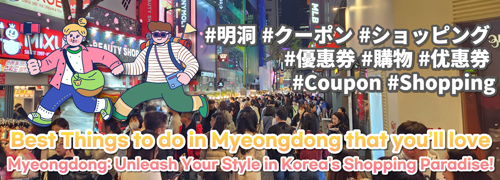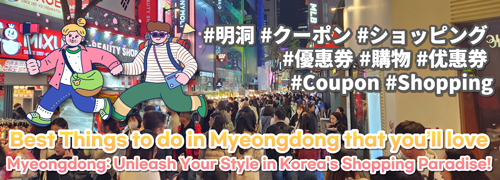popular in Chungcheong-do
informations on traveling
495Articles
Review
11,386Reviews
Famous spot for Chungcheong-do
Chungcheongnam-do(Asan-si)
,
Onyang Hot Springs is the oldest hot spring in Korea, founded about 1,300 years old and has been operating as a hot spring for about 600 years. During the Joseon Period, it is recorded that King Sejong (reign 1418~1450) and many other kings came here to rest or treat their illnesses.Onyang Hot Springs, with its water temperature at around 57℃, is considered hot even among hot springs. It has a high concentration of radium and its alkaline water is both high in quality and quantity. It is known to be effective in treating neuralgia, arthritis, skin problems, liver disease, high blood pressure, and various geriatric diseases. The combination of the quality of water and famous accommodations nearby has made this hot spring a hot item for many tourists. As there are 120 hotels and motels in this area, the whole city is sometimes known as a hot spring city. They also have swimming pools using the hot spring water, and they are very popular. Every year over five million tourists are welcome here.
Chungcheongnam-do(Asan-si)
,
Oeam-ri Folk Village is occupied by the families of its founder Ye-an Lee who settled here about 500 years ago. There are about 86 Giwa houses and straw houses with narrow stone fence alleyways between them. When you walk along the stone fences you can experience the deep tradition roots of the historic village. You can see all kinds of trees in the front yard of the houses, such as persimmon trees, apricot trees, chestnut trees, and gingko trees. At the front entrance to the village you can see the totem pole guardian, and daily artifacts of the Joseon Period (1392-1910) such as treadmills, millstones, water mills, and thatched roof houses. The stone fence roads and Yusil wine add to the traditional atmosphere of the place.
The most famous houses in the Oeam-ri Folk Village are the 'Yeongam Gunsu' House and 'Ichampan' House. Yeongam Gunsu House has a beautiful garden with thick trees blending with pond and stones. No one lives at the house anymore. Its entrance has a sign which is said to be written by Chusa Kim Jeong-Hee. Ichampan House is designated as Important Folk Monument, and people who live here have been making a folk wine called Yeonyeopju for generations. This wine has also been designated as an Intangible Cultural Asset. It was a wine offered to the king every spring and is made with Nuruk (glutinous rice) and Yeongeun, mixed with fermented evergreen leaves.
The entire village of the Oeam-ri Folk Village is called a living museum, because the old ways are so well preserved everywhere. It takes about an hour and a half to go through the entire village.
Chungcheongbuk-do(Boeun-gun)
,
Built in the 14th year of Silla King Jin-Heung's reign, Beopjusa Temple is located on Mt. Songnisan. What stands today are the remnants of rebuilt monuments through left over from the lengthy and arduous process. When you enter the temple, the yellow earthen road will catch your eye. The earth was ground into small stone shapes, burned, and then scattered over the road. The road itself leads to the Orisup Trail, and there will be a nature study trail beside it. Pass the Orisup trail, through thick pine trees, and you will come across the main gate of the temple. There is a large rock with a hole in the middle beside the main gate. You can drink spring water that comes out of the hole. Inside the temple you can see Palsangjeon, Pavilion which is a wooden building shaped like a tower. Then you can visit the Seokryeonji Lotus Flower Pond. As the name suggests, the pond is made of stones. At the back of Palsangjeon Pavilion, there is the Ssangsajaseokdeung (Two Lion Stone Lamp), and, again as the name suggests, the two lions uphold the stone lamp. The main building is also fascinating. It is two-stories high, and very stately. In addition, Beopjusa Temple has Ma-aeyeorae-uisang carved into a rock. Uisang refers to a sitting Buddha, and this particular Ma-aeyeorae shows Buddha sitting on a lotus flower. Passage of time has done much damage, but the original shapes are still well preserved.Beopjusa Temple represents Mt. Songnisan, containing within it 1,500 years of history and a matching list of numerous National Treasures and Monuments. Here you can experience the Buddhist culture reflected in these artifacts.
Chungcheongbuk-do(Yeongdong-gun)
,
Situated in Yeongdong (Chungcheongbuk-do), Wine Korea is the only winery in Korea that maintains a vineyard and produces the wine brand, Chateau Mani.Beginning in November 2006, Wine Train run by Wine Korea offers a one-day train tour between Seoul and Yeongdong. Departing from Seoul Station, its passenger cars, themed Red/White Wine or Ginseng, boast an elegant café atmosphere. Above all, visitors can enjoy as much of the wine produced in Yeongdong as they want.Upon arriving at Yeongdong, visitors head to Wine Korea, enjoy foot massages in wine, participate in making natural cosmetics, and tour the wine production facilities. The tour goes on to visit Ginseng Exhibition Hall in Geumsan and Traditional Medicinal Herb Market. High quality wine, wellbeing grape juice, and Chateau Mani cosmetics are also available online for purchase.
Chungcheongnam-do(Buyeo-gun)
,
Baekje Cultural Land, built over a period of 17 years, is nestled in Gyuam-myeon, Buyeo-gun, Chungcheongnam-do, providing a home to Baekje’s Cultural Heritages. The complex was used as a filming site for “Running Man”, in the episode starring Jeong Wooseong and Han Hyoju.The site is spread out over 3,276,000 square meters, filled with the trace of Baekje Culture. Sabigung Palace reproduces the scenery of a royal palace during the Three Kingdoms period, and Neungsa Temple, a royal temple representative of Baekje, has been recreated according to the real size at the historic site in Neungsan-ri, Buyeo-eup. The Five-story Stone Pagoda, prominently seen after passing through Daetongmun Gate and Wiryeseong Fortress during Hanseong Baekje Era, gives a different aspect of Sabigung Palace. To enjoy the entire view of the complex at once, get on the Jehyangnu ferry.
Chungcheongnam-do(Boryeong-si)
,
Daecheon Beach is located on Korea's west coast in Chungcheongnam-do Province.Clamshells blend into the white sands of this beach that stretches 3.5 km. No matter if it's high or low the tide, visitors can enjoy the waters anytime. A cruise boat sails in the waters off Daecheon Beach, offering visitors a view of white pebbles that line the ocean floor. This spot has been a popular tourist destination for quite some time and the facilities are well made. Cultural points of interest include Jogak (sculpture) Park and Dol (stone) Park. Most people come to this beach to cover their bodies in the thick, mineral-rich mud. The therapeutic treatment is known to improve the look of skin and is even said to help those suffering from skin disorders.
Chungcheongbuk-do(Danyang-gun)
,
Dodamsambong are three stone peaks rising out of the Namhangang River. The big rock is called Janggunbong (Husband Rock), the rock on the left side which appears to be showing coquetry is called Cheopbong (Mistress Rock), and the rock on the right side which is turning away from the big rock is called Cheobong (Wife Rock). The peaks are said to represent an angry wife turning away from her husband who has taken a concubine in order to secure a male heir. It is said that Jeong Do-jeon, a politician who made contributions to the establishment of the Joseon Dynasty, spent his young days here and used 'Sambong' as his pen name.Surrounding the three peaks is a musical fountain which was set up in 1998. The fountain becomes a place for tourists to relax, especially during the nighttime, when watching the water cascade and flow in time with the music is a thing of beauty.
Chungcheongbuk-do(Cheongju-si)
,
This early printing museum, located on the site of Heungdeoksa Temple in which Jikji, the world's oldest extant book, printed by movable metal type, was printed, was founded on March 17, 1992. Since the technology’s inception, Korea has substantially developed its metal-type printing methods. In this museum, approximately 650 artifacts including ancient movable metal and wooden print books from the Goryeo and Joseon periods, relics from the Heungdeoksaji Temple site (흥덕사지) and printing tools are on display. Here, visitors can learn about the history of the Korean printing technologies and culture.In addition to exhibition, the museum has been promoted to hold the Cheongju International Printing & Publishing Fair, to study early printing culture and printing types and to publish museum journals and early printing-related papers.
Chungcheongnam-do(Boryeong-si)
,
Of the numerous festivals in Korea, it is the Boryeong Mud Festival that probably attracts the largest number of international visitors. During the festival period, tourists flock to the area to experience the beneficial properties of the Boryeong mud, and also to have lots of fun. Fully immersed in the both the mud and the festival’s great atmosphere, visitors enjoy mud wrestling, mud sliding and even swimming in the mud mega tub. Visitors feeling particularly energetic can try the marine mud-training course, whilst those looking for something more chilled can relax in the mud massage zone. In the evening, music and fireworks continue the party on the beach.
Chungcheongnam-do(Asan-si)
,
Asan Spavis is located about an hour away from Seoul, and uses hot spring water for its unique sports and treatment facility.
Spavis is a family-oriented leisure facility that houses a treatment pool that uses hot spring water for various medical treatments, an outdoor hot springs pool that you can enjoy even in the winter, a hot spring pool tucked away in a cozy hut that’s perfect for families or couples, and a kids park where children can have a safe and enjoyable time.
Other facilities include a snow sledding area, a sports massage center, a skin care treatment center, and more.





